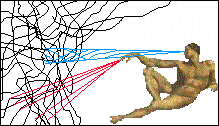
Introduction
Barbara Dyba Et al. has shown in her new studies the effects of three-finger toxins derived from the venom of Naja ashei, a species of snake, on cancer cells. Three-finger toxins are a class of proteins known for their ability to disrupt cellular membranes. Understanding the mechanisms by which these toxins interact with cells can provide insights into potential therapeutic applications, particularly in targeting cancer cells.
Background on Three-Finger Toxins
Three-finger toxins are named for their characteristic three-fingered structure. They play a significant role in the neurotoxic effects of snake venoms, and recent research has highlighted their potential as tools in cancer treatment due to their ability to induce cell death. Their study investigates how the charge of these toxins influences their interaction with cancer cells, particularly neuroblastoma and promyeloblast cells.
Objectives of the Study
The primary objective of the research was to determine the impact of the charge of three-finger toxins on cell survival, membrane damage, and the overall properties of cell membranes. The researchers aimed to elucidate the relationship between the toxin’s charge and its cytotoxic effects on cancer cells, thereby advancing the understanding of how these toxins can be utilized in medical applications.
Methodology
To explore the effects of differently charged three-finger toxins, the study utilized several experimental approaches:
- Cell Lines: Neuroblastoma and promyeloblast cell lines were used to assess the cytotoxic effects of the toxins.
- Charge Manipulation: The study involved testing toxins with varying charges to observe differences in their interactions with the cell membranes.
- Assessment of Membrane Damage: Techniques such as measuring cell viability and analyzing membrane integrity were employed to evaluate the impact of the toxins on the cancer cells.
Results
The findings revealed that the charge of three-finger toxins significantly influences their toxicity towards cancer cells. Key results included:
- Toxicity Correlation: Toxins with a higher positive charge exhibited increased toxicity, leading to higher levels of cell death in neuroblastoma and promyeloblast cells. The positive charge allows these toxins to more effectively disrupt the negatively charged cell membranes.
- Membrane Damage: The study demonstrated that positively charged toxins induce greater membrane damage, which correlates with increased cytotoxicity. The interaction between the positively charged toxins and the negatively charged components of the cell membrane facilitates this process.
- Membrane Properties: The total charge of the cell membrane also plays a critical role in the interaction dynamics between the toxins and the cells. Variations in membrane charge can influence how toxins bind and penetrate the membrane, affecting overall cell viability.
Discussion
The results of this study provide important insights into the mechanisms by which three-finger toxins exert their effects on cancer cells. The ability of positively charged toxins to damage cell membranes more effectively suggests a potential pathway for developing new cancer therapies. By manipulating the charge of these toxins, researchers might enhance their selective toxicity towards cancer cells while minimizing harm to healthy cells.
Furthermore, understanding the charge interactions between toxins and cell membranes can lead to more targeted approaches in toxin-based therapies. This could involve designing or modifying toxins to optimize their charge for better efficacy against specific cancer types.
Implications for Cancer Treatment
The findings indicate that three-finger toxins, particularly those with higher positive charges, could be explored as therapeutic agents in cancer treatment. By harnessing the mechanisms of membrane disruption, researchers may be able to develop novel strategies to target and kill cancer cells selectively. This could open new avenues for treatments, especially for aggressive cancer types that are often resistant to conventional therapies.
Conclusion
In conclusion, the study highlights the significant role of charge in the interaction between three-finger toxins from Naja ashei venom and cancer cells. The research underscores the potential of these toxins as tools for cancer therapy, particularly through their ability to disrupt cell membranes in a charge-dependent manner. Future research could focus on further elucidating the molecular mechanisms at play and exploring the therapeutic potential of modified toxins in clinical settings.
Read the full open-access paper on the link below:
https://www.nature.com/articles/s41598-024-69459-4



